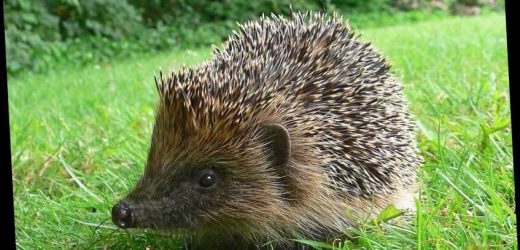HEDGEHOGS are omnivores, which means they can eat all types of food.
But they are greedy creatures and will scoff pretty much anything you put out for them, so you need to be careful and avoid certain foods.
What do hedgehogs eat?
The main part of a hedgehog's diet is creepy crawlies such as worms, beetles, caterpillars, slugs, earwigs, and millipedes.
But hedgehogs will take the opportunity to eat anything they come across such as frogs, baby rodents, bird eggs and even baby birds.
Fallen fruit and vegetables also make up part of their diverse menu.
Hedgehogs are mammals, so have a complex system to feed and need variety across their meals.
Hedgehogs have a rare ability to digest chitin, which is a source of protein and fibre found in insect exoskeletons, a trait they share with some fish, including cod.
What can I feed hedgehogs?
Hedgehogs are spiky, but they are chilled out about what they eat.
But whether you are feeding a wild hedgehog in your garden or a pet hedgehog in your home, some foods are better than others.
Although wild hedgehogs feed themselves, they sometimes supplement their diet with food we leave in our gardens for them.
It’s important to replicate their natural diet, so meat-based products such as good quality cat or dog food is good.
Less fatty meats like chicken are recommended.
There are also specific hedgehog foods you can buy.
The crunchy animal feed kibbles are good for hedgehogs’ teeth, like some of the hard items in their natural diet such as shells and small bones.
Hedgehogs also like to have some fruit, but should be given as treats.
They can eat apples and pears, soft fruits like blueberries and strawberries, bananas, stoned fruits like mangoes, peaches and cherries, and melons.
Hedgehogs find it hard to digest vegetable fibres, but can manage a little, or you can give them cooked veggies.
They can have roots such as carrots, beetroot, turnips and sweet potatoes, greens like asparagus, spinach, kale, dandelions, broccoli and cauliflower, and pumpkins, squashes, aubergine and cucumber.
Peas and sweetcorn are also safe.
Hedgehogs lose a lot of body fat when they hibernate from November to March, so you can help by feeding them up beforehand.
You can help hedgehogs to feed themselves by leaving parts of the garden wild, or making piles of logs and leaf litter.
This will encourage the invertebrate species hedgehogs feed on, as well as making a nice home for hedgehogs.
You may be feeding lots of hedgehogs, because up to 10 different hedgehogs may visit a garden overnight.
Hedgehogs need to drink too, so leave fresh water in a shallow bowl.
What can I not feed hedgehogs?
Hedgehogs are small creatures with large appetites, and they will blow out on pretty much anything you feed them.
So it’s up to you to ensure what you give is what they need.
In general, fish-based food is not recommended for hedgehogs.
Hedgehogs are lactose intolerant, so you should avoid giving dairy products like milk or cheese, but some people report feeding small amounts of cottage cheese or yoghurt.
You should not give onions, garlic, potatoes, tomatoes, mushrooms, fatty red meat, nuts and seeds or chocolate.
Grapes or raisins, avocados and citrus fruit are also a no-no.
And although hedgehogs can eat stoned fruits like cherries and mangoes, the stones are poisonous to them so must be removed.
The jury is out on pineapple, so it is best to avoid feeding that to hedgehogs too.
Hedgehogs kept as pets should not be fed too much, or they gain dangerous amounts of weight.
One or two tablespoons of high-protein animal food biscuits, plus a teaspoon of fruits and vegetables, and some insects, is sufficient for a hedgehog per day.
Hedgehogs can often be seen eating underneath bird tables but sunflower seeds and mealworms should be restricted.
Source: Read Full Article






